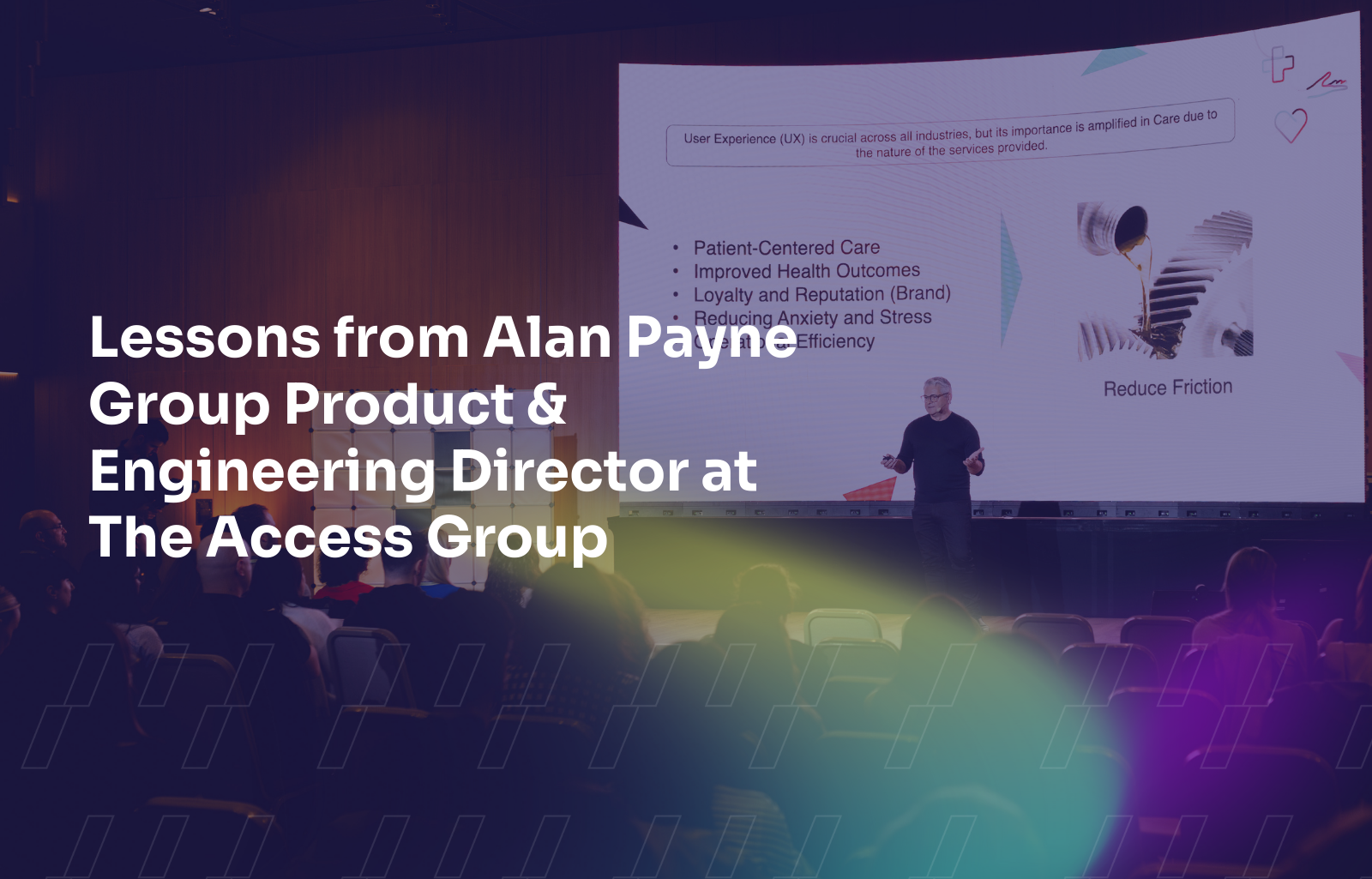Redesigning Healthcare: Why User Experience Is the Future of Integrated Care - Lessons learned from Alan Payne, Group Product & Engineering Director
In today’s fast-evolving healthcare landscape, user experience is more than just a design feature—it’s vital to delivering quality care. When we talk about “user experience” in healthcare, we’re talking about how patients, relatives, and healthcare professionals interact with the systems that support care. And when those systems are intuitive and frictionless, the impact can be transformative.
Why User Experience Matters in Healthcare
Improving user experience doesn’t just make things easier—it directly improves outcomes. When patients can navigate systems effortlessly, communicate effectively with providers, and access the right care at the right time, they feel seen, respected, and empowered. That sense of dignity is essential, especially when dealing with vulnerable health conditions.
Connecting the Dots with Data
One of the biggest breakthroughs in improving user experience lies in data integration. By connecting patient data across different platforms and providers, we can eliminate silos that often slow down care. Seamless data sharing supports more personalized and efficient treatment, helping care teams respond quickly with better information at their fingertips.
Reducing Friction with Technology
Healthcare systems are often burdened with outdated, clunky interfaces that frustrate both providers and patients. Reducing this friction means redesigning systems to be user-friendly and interoperable. It's about making sure all tools—from scheduling apps to electronic health records—work smoothly together, so the focus stays on the patient, not the process.
AI and the Human Touch
Artificial intelligence is also stepping in to reshape user experience. From simplifying clinical documentation to supporting decision-making, AI tools can significantly cut down the administrative load. For example, reducing the time clinicians spend on notes—from seven minutes to three—means more time spent with patients, not paperwork.
But with AI comes responsibility. Patient-centered design must go hand-in-hand with privacy, informed consent, and compliance with regulations like GDPR. Trust is foundational in healthcare, and ethical AI design plays a major role in earning it.
The Human Element: Romania’s Role
One key takeaway from recent healthcare innovation conversations—especially in settings like the PROW conference—is the irreplaceable value of people. In countries like Romania, where passion, collaboration, and talent run deep, investment in healthcare technology is thriving. It’s a reminder that no matter how advanced our tools get, progress is always powered by people.
Healthcare is personal. So is user experience.
When we make systems easier to use, more connected, and more respectful of patient needs, we don’t just create better interfaces—we create better outcomes. And that’s something worth investing in.

